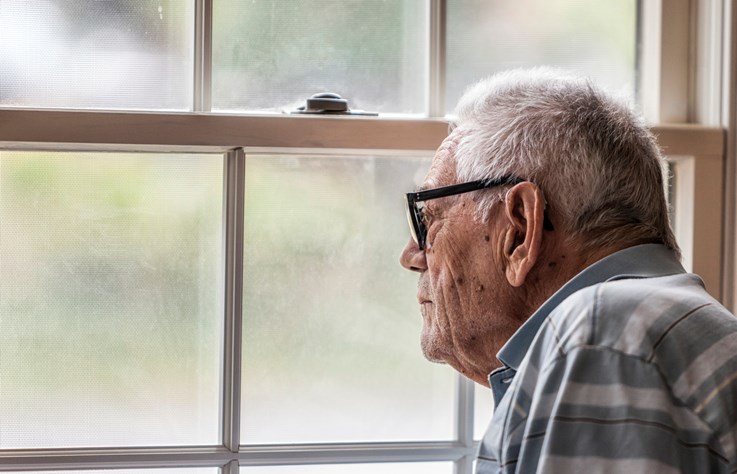B.C.’s Seniors Advocate is calling for increased sick pay for care-home staff, hiring of more nurses, elimination of shared rooms and increased COVID testing during outbreaks, after a review of 365 COVID outbreaks at 210 seniors homes over a one-year period.
Isobel Mackenzie said the recommendations are geared toward “things we can do right now,” rather than the larger issue of whether health authority-operated sites fared better in outbreaks than sites where care is contracted out to private companies or non-profits.
The review focused on factors leading to COVID outbreaks from March 2020 to February 2021, most of them in long-term care, with just 13 per cent in assisted living.
“It is seniors, particularly those who live in long-term care and assisted living, that have felt the deepest personal impact, as they are so disproportionately at risk of serious illness and death from COVID,” Mackenzie said as she released the report Wednesday morning.
The majority of outbreaks in B.C. were contained and did not result in any COVID-19 deaths because of the “herculean efforts” of staff, site operators, public health officials and the provincial government, which early in the pandemic “took decisive actions to blunt the impact of COVID-19 in long-term and assisted living in B.C.,” Mackenzie said.
Despite “everyone’s best efforts,” however, more than 800 residents died of COVID-19, she wrote.
Mackenzie said researchers traced the first COVID case in each facility, how the facility was notified and the testing strategy directed by public health.
Factors determining whether the outbreak was large or small included the amount of paid sick leave provided by a site, the level of registered nursing staff, and whether the operator contracted out for direct care services, she said.
Sites with a higher proportion of registered-nurse hours for direct care — typically health authority-owned sites — were more likely to experience a contained outbreak, while sites with a lower proportion of nurse hours — typically privately owned — were more likely to experience a larger outbreak, the report said.
As well, the earlier that testing was done, the more likely an outbreak was to be contained. And while most rooms are single occupancy, 10 per cent are shared rooms — mostly in health authority-operated long-term care homes — which influenced the likelihood of having a larger outbreak, the report said.
The report says four out of 10 staff in long-term care and assisted living were casual staff. “Almost nobody provides paid sick days for casual staff,” said Mackenzie, adding: “The impact of this on transmitting COVID-19 and other infectious diseases and illness is pronounced.”
About 40 per cent of staff said that on at least one occasion, they came to work when not feeling well so as not to burden other staff and because of potential lost pay. Staff need to be supported financially if they remain at home when ill, Mackenzie said.
Staff and residents of long-term care homes were almost three and a half times more likely to contract COVID-19, and residents were 32 times more times likely to die from it, the report says. Visitor restrictions left seniors feeling isolated and staff saw “exponential growth” in their workload and stress.
The review found most outbreaks, 261 of 365, were small and limited to four or fewer cases. Seventy-five per cent of outbreaks had no COVID-19 fatalities.
Seventy-six per cent of sites that experienced an outbreak reported that the first case was in a staff member — 52 per cent of those first cases were care aides and 12 per cent were nurses.
In 22 per cent of outbreaks, the first reported case was in a resident. Twelve per cent of those were transferred into long-term care from hospitals, but in the remainder, it’s likely that the virus was in the facility and transmitted by asymptomatic staff with COVID, Mackenzie said.
Just one case, less than one per cent, was brought in by a visitor.
Across the province, health-authority-operated facilities saw fewer COVID-19 cases per 1,000 beds — 81 — than contracted for-profit facilities at 146 cases, and contracted not-for-profit facilities at 153. The number of cases per 1,000 beds was lowest in fully private facilities, at 43 per 1,000 beds.
Of 39,853 long-term care and assisted-living beds in B.C., Island Health operates 8,426 or 21 per cent.
Both public and private facilities in the Island Health region had far fewer staff and resident cases per 1,000 beds than any other health authority — 2.6 cases per 1,000 compared with the similarly sized Northern Health region with 93.8, and 197 per 1,000 in Fraser Health.
The review shows that while the Lower Mainland has just 45 per cent of B.C.’s long-term care and assisted-living sites, it experienced 84 per cent of the outbreaks, which is linked to higher community transmission.
In the first wave of the pandemic, B.C.’s long-term care and assisted-living sector performed proportionately better than in other provinces, such as Ontario, the report says. But those early achievements were lost “in the magnitude of Wave Two,” where 87 per cent of outbreaks in the two waves occurred.
In B.C. during the first wave, there were 17.4 COVID cases in long-term care per 1,000 beds, while in the second wave, there were 105.8 cases per 1,000 beds. B.C. still did slightly better than Ontario, however.
The review from the office of the seniors advocate looked at 487 long-term care and assisted-living sites and included 100,000 records over multiple years, said Mackenzie, who added that more will have to be done to assess the impact of the pandemic on seniors.



